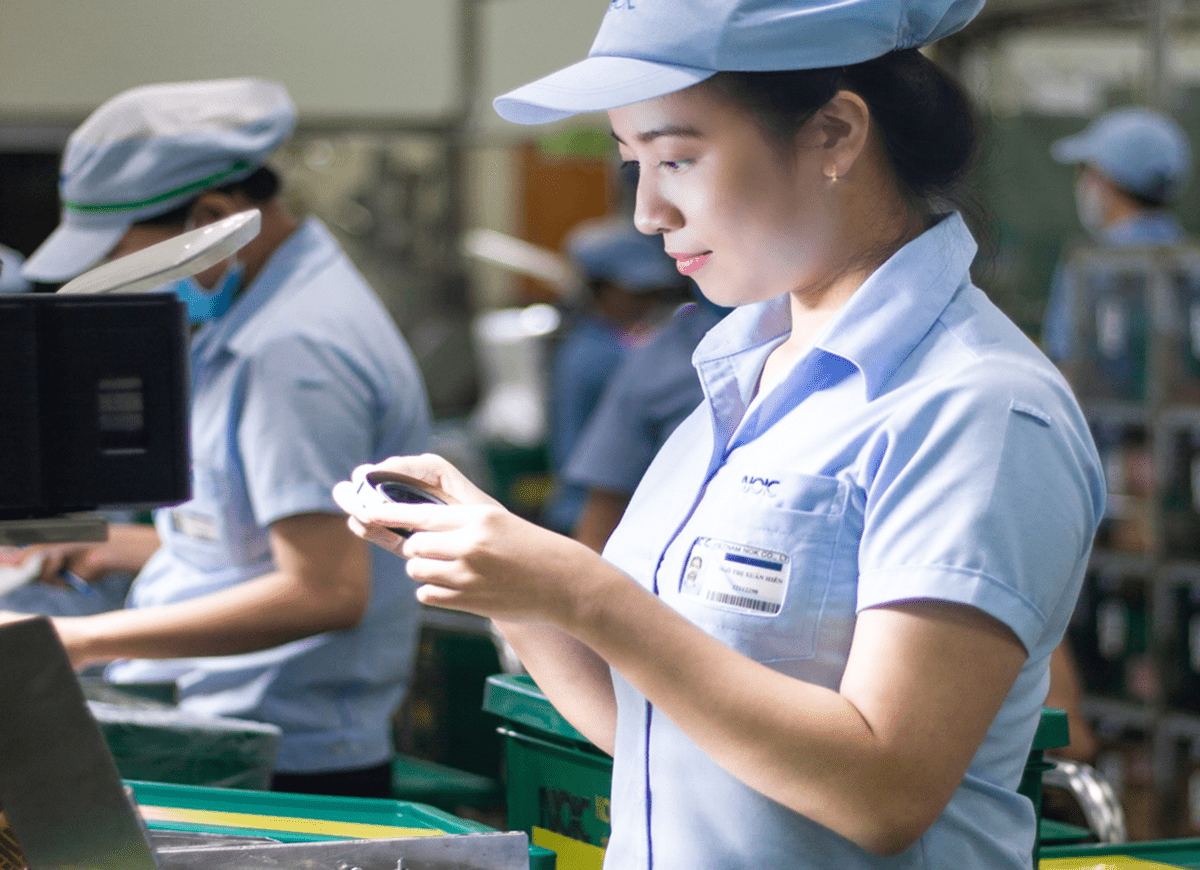
Pointing to the deserted 10,000 sq m land on the grounds of his company, Ho said the land is reserved to plant trees to absorb carbon, one of the company’s solutions to reduce carbon volume to zero. So, the planting will be accelerated in the time to come.
NOK has been planning to ‘go green’ for a long time. Under the plan, the company will reduce carbon emissions by 30 percent and step by step move towards carbon neutrality.
To reach that end, NOK now uses solar power, electricity-saving machines and equipment, and optimizes production materials to ensure the least possible industrial waste.
“We also consider joining forces with other units to grow plants in suitable areas in the province, or in the country. This is the social responsibility of enterprises which need to contribute to increasing the carbon adsorption in the environment,” he said,
NOK is a subsidiary of the Japanese NOK Group. In 2021, the group began drawing up a plan to shift to green production for its subsidiaries all over the world. However, this was just to cut production costs and be environmentally friendly.
After COP26, where the commitments about greenhouse gas emissions occurred, the shift has accelerated with detailed plans for every stage.
“This means that ‘going green’ is a must now. If we don’t do this, or if we do this one step late, we will lose great opportunities,” he said.
Customers now tend to use products which can meet requirements on green production. If manufacturers cannot meet the requirements, they won’t be able to compete with other enterprises and sell their products.
Some clients now even set green production as the No 1 criterion for them to consider products before buying.
NOK has assigned an administration unit to manage CO2 emission volume to connect all divisions in the companies to implement the CEO’s instructions and the company’s plan on green production.
Meanwhile, Ho and 4-5 workers in the companies attended a training course in Hanoi on standards and regulations in net carbon emission calculations. Ho believes that enterprises need to implement a green production plan, rather than wait for support from local authorities.
In Dong Nai, the number of enterprises like NOK is increasing. In Bien Hoa 2 Industrial Zone (IZ), Cargill has inaugurated its second plant which manufactures animal feed meeting green production criteria.
Pham Duc Thang of Cargill Vietnam and Thailand said this is the most modern plant of Cargill in Asia. The work is built in accordance with a green model with pre-engineered steel and the roof is capable of taking full advantage of natural light.
Inside the plant, 95 percent of operations are done by robots, which helps control production quality, reduce the workforce and minimize errors. The products of the company can satisfy international standards in quality and safety, including ISO 22000 and FAMI QS.
Meanwhile, Nestle Vietnam in Dong Nai has drawn up a roadmap for its plants to reduce emissions by 20 percent by 2025 and by 50 percent by 2030 before it can reach the target of net zero by 2050.
To implement its plan, Nestle focuses on accelerating regenerative agriculture, and preserving and recreating forests.
At the same time, it implements a program on reducing emissions in production and reusing packages. It is expected that by 2025 more than 95 percent of its plastic packages will be designed to be recycled.
Dong Nai is one of Vietnam’s industrial production centers. As of December 31, 2023, as many as 33 Industrial Zones had been set up there with total land area of 10,515 hectares. The IZs in the province have attracted enterprises of 44 countries or territories with 2,111 projects, including 1,459 foreign invested and 652 Vietnamese owned projects.
Under the plan to minimize carbon emissions in Dong Nai by 2030 that was approved last February, industry is one of the seven key fields to implement a emission reduction roadmap.
Tam An - Hien Anh - Hoang Anh